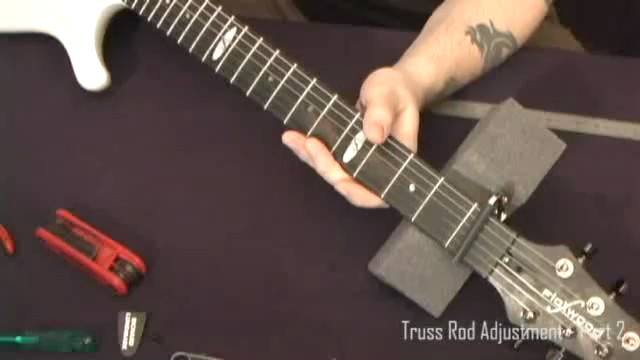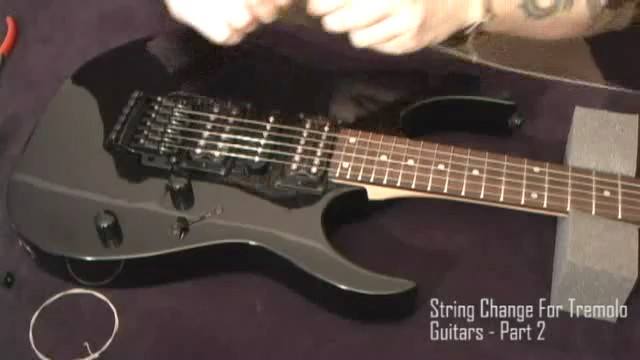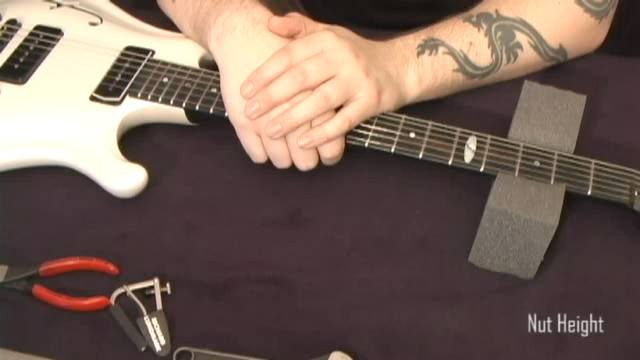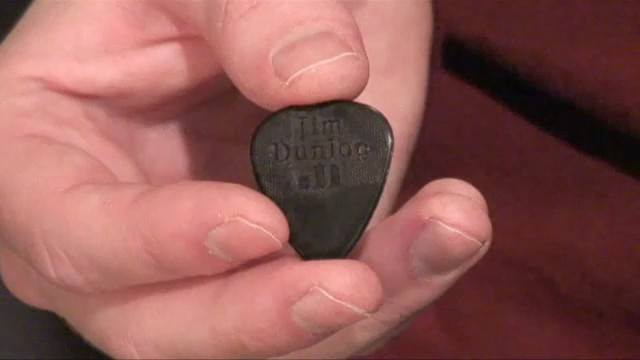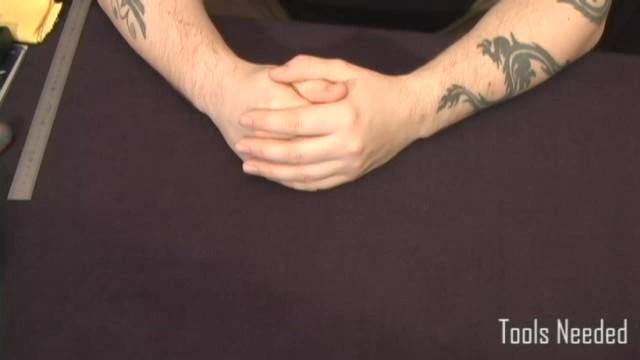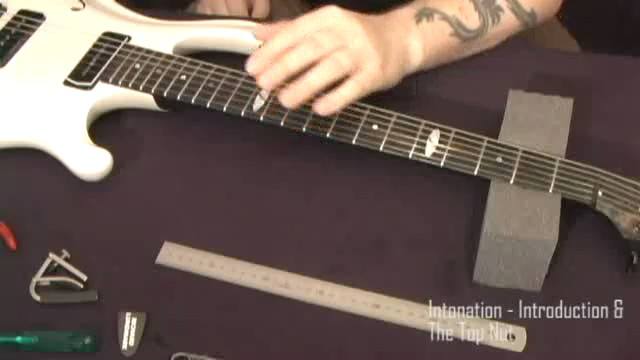Fret Board Maintenance
When changing strings, I recommend you change them one at a time, unless you feel the need to clean your fret board, oil it in, or polish your frets. This will keep the neck in constant tension, and won’t de-stabilize it momentarily.
If you however, have a dirty/grimy fret board, or need to polish your fret wire, take all your strings off the guitar before proceeding. Remember to block your tremolo of you have a tremolo guitar, I use a rubber myself (see the Tremolo section in this video tutorial, towards the end).
If your fret board is REALLY dirty (for example if you’ve bought a dirty used guitar or something), regular oil won’t do the trick very well. What I recommend is taking a small bowl filled with lukewarm water, and adding a few drops of hand dish detergent (the green stuff in bottles). Then take a toothbrush, dip in the solution, and start filing away at the dirt. As soon as the dirt has been dissolved, IMMEDIATELY wipe it off with a paper towel. You do NOT want the water to seep into the wood, and under the frets for any extended period of time. Then repeat this process on all the frets of the guitar. Once you’ve done, let the fret board dry off for a while. Then you move on to the oil.
For darker woods, such as Rosewood, Ebony or such, I recommend using Teak Oil. This oil is often used to polish wood furniture or the more exclusive kind. This oil gives a very nice luster and shine to the wood, brings out the grain and polishes to a nice protective sheen.
However, for maple fret boards, I would not use Teak oil, since it does contain a slight coloring agent, and thus may darken a light maple board (very slightly, but still). In such instances, I recommend using Chinese Tung oil, or Lemon oil instead.
When applying oil, be moderate, no excess liquid is ever good on the fret board. Dab a little on a clean cloth and wipe down the fret board with it. Let it sink in for a few minutes, then wipe off the excess and polish.
If your frets look grimy and worn, a slight fret wire polish will do wonders for the playability of the neck. You can use special fret polish kits available in stores, and has a template that you put over the fret and then use a special polishing cloth. These work very well. However, if you don’t have access to this you can also use 0000 grit steel wool. Just make sure you mask of the frets with some freeze-tape, so that you don’t scratch your fret board.
Another thing you should consider when polishing your frets, and you are using fine-grit steel wool instead of a fret-polishing cloth, is that the steel-wool can break apart into very, very small metal filings. These can adhere to the magnetic pole pieces of your pickups, and if these aren't sufficiently covered, the filings can end up inside the pickup, and affect their performance. The easiest thing to do, is to tape of your pickups as well, using the aforementioned freeze-tape. Should you opt not to do so, the metal-dust is usually easily removed with a magnetic-tipped screwdriver.
























